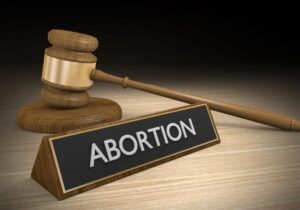
The gender gap is widening in India. It ranks 108 of 144 countries on the 2017 World Economic Forum (WEF) Global Gender Gap Report – dropping 21 places from last year, which saw India ranked 87th.
Failing to break the top 100
The WEF measures countries across four indicators: educational attainment, economic participation and opportunity, political empowerment, and health and survival. On political empowerment, India scores an impressive 15th place. On the other three, it fails to break into the top 100.
Women’s health and survival is India’s poorest showing. Indian women languish at 141, three precarious places from the bottom. Only women in Azerbaijan, Armenia and China fare worse in this respect.
Economic participation does not see Indian women in a much better position. There, India takes the 139th spot. In terms of educational attainment, India is in 112th place despite, as noted by Quartz, “managing to bridge the gender gap in enrollment in primary and tertiary education.”
Equality of the sexes
The list signals in stark terms that India has a long way to go before it achieves equality of the sexes, especially in terms of healthcare. India’s 652.7 million-strong female population would statistically be healthier if they lived in Pakistan, Burkina Faso, Yemen or Bangladesh.
![Sex determination ban in India By Melanurya (Own work) [Public domain], via Wikimedia Commons](/wp-content/uploads/2017/04/Sex_determination_ban-300x225.jpg)
To discuss each of these causes in turn, the most recent national census in 2011 placed India’s sex ratio (SR) at 940 females to every 1,000 males. Sex ratio at birth was posited at (SRB) 909:1,000.
More recent figures suggest this is dropping further still. Civil Registration System (CRS) data places SRB at 887:1,000 for 2014. This means the overall sex ratio in the country will continue to drop, with projections for the year 2031 anticipating an SR of 898 : 1,000.
This comes despite sex-selective abortion being illegal in India since 1994. There are a plethora of measures to prevent female foeticide through prenatal sex discrimination. Despite this, the practice continues. As reported by Health Issues India earlier this year, UNICEF claims “foetal sex discrimination and sex-selective abortion has grown into a Rs 1,000 crore (US$244 million) industry.”
Lack of access to healthcare

Meanwhile, access to healthcare (or lack thereof) continues to impede progress. India suffers a chronic shortage of healthcare staff and facilities which disproportionately affect women. This is compounded by restrictive social norms which mean it more difficult still for women in India to seek and to access healthcare, such as screening for noncommunicable diseases such as breast and cervical cancer.
Reproductive and contraceptive health presents another considerable challenge. Reproductive rights in India, though the law is liberal in theory, may be difficult to avail. Safe abortions can be difficult to access, particularly for women in rural communities. This leads to a reliance on quack doctors, with abortions being performed in unsafe conditions. As a result, ten women die from unsafe abortions every day. This accounts for eight percent of maternal deaths in the country. Access to abortion using medicines does, though, appear to be improving the situation.
Contraceptive health is poor
Contraceptive health in India is also poor. Sterilisation continues to be the number one method of family planning in the country, with a skewed emphasis on female sterilisation. Meanwhile, statistics indicate more than half of Indian women in the 15-49 age demographic don’t use modern contraceptives.
Indian women are evidently facing a crisis on many fronts. Healthcare is one of them. It is imperative that action be taken to rectify this situation across castes and communities. The limitations and barriers facing women in India pose challenges not just to their development and well-being, but to the development and well-being of the country as a whole.
The World Economic Forum Gender Gap Report 2017 can be accessed here.

